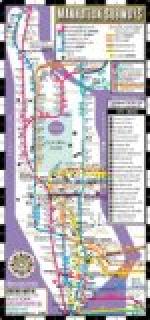The diagram on page 109 illustrates the connections of the contact rails, track rails and the positive and negative feeders. All negative as well as positive feeders are cables of 2,000,000 c. m. section and lead sheathed. In emergency, as, for example, in the case of the destruction of a number of the cables in a manhole, they are, therefore, interchangeable. The connections are such as to minimize “track drop,” as will be evident upon examination of the diagram. The electrical separation of the several contact rails and the positive feeders connected thereto secures a further important advantage in permitting the use at sub-stations of direct-current circuit-breakers of moderate size and capacity, which can be set to open automatically at much lower currents than would be practicable were all contact rails electrically connected, thus reducing the limiting current and consequently the intensity of the arcs which might occur in the subway in case of short-circuit between contact rail and earth.
The contact rail itself is of special soft steel, to secure high conductivity. Its composition, as shown by tests, is as follows: Carbon, .08 to .15; silicon, .05; phosphorus, .10; manganese, .50 to .70; and sulphur, .05. Its resistance is not more than eight times the resistance of pure copper of equal cross-section. The section chosen weighs 75 pounds per yard. The length used in general is 60 feet, but in some cases 40 feet lengths are substituted. The contact rails are bounded by four bonds, aggregating 1,200,000 c. m. section. The bonds are of flexible copper and their terminals are riveted to the steel by hydraulic presses, producing a pressure of 35 tons. The bonds when in use are covered by special malleable iron fish-plates which insure alignment of rail. Each length of rail is anchored at its middle point and a small clearance is allowed between ends of adjacent rails for expansion and contraction, which in the subway, owing to the relatively small change of temperature, will be reduced to a minimum. The photographs on pages 110 and 111 illustrate the method of bonding the rail, and show the bonded joint completed by the addition of the fish-plates.
The contact rail is carried upon block insulators supported upon malleable iron castings. Castings of the same material are used to secure the contact rail in position upon the insulators. A photograph of the insulator with its castings is shown on page 113.
[Sidenote: Track Bonding]
The track rails are 33 feet long, of Standard American Society Civil Engineers’ section, weighing 100 pounds a yard. As has been stated, one rail in each track is used for signal purposes and the other is utilized as a part of the negative return of the power system. Adjacent rails to be used for the latter purpose are bonded with two copper bonds having an aggregate section of 400,000 c. m. These bonds are firmly riveted into the web of the rail by screw bonding presses. They are covered by splice bars, designed to leave sufficient clearance for the bond.




